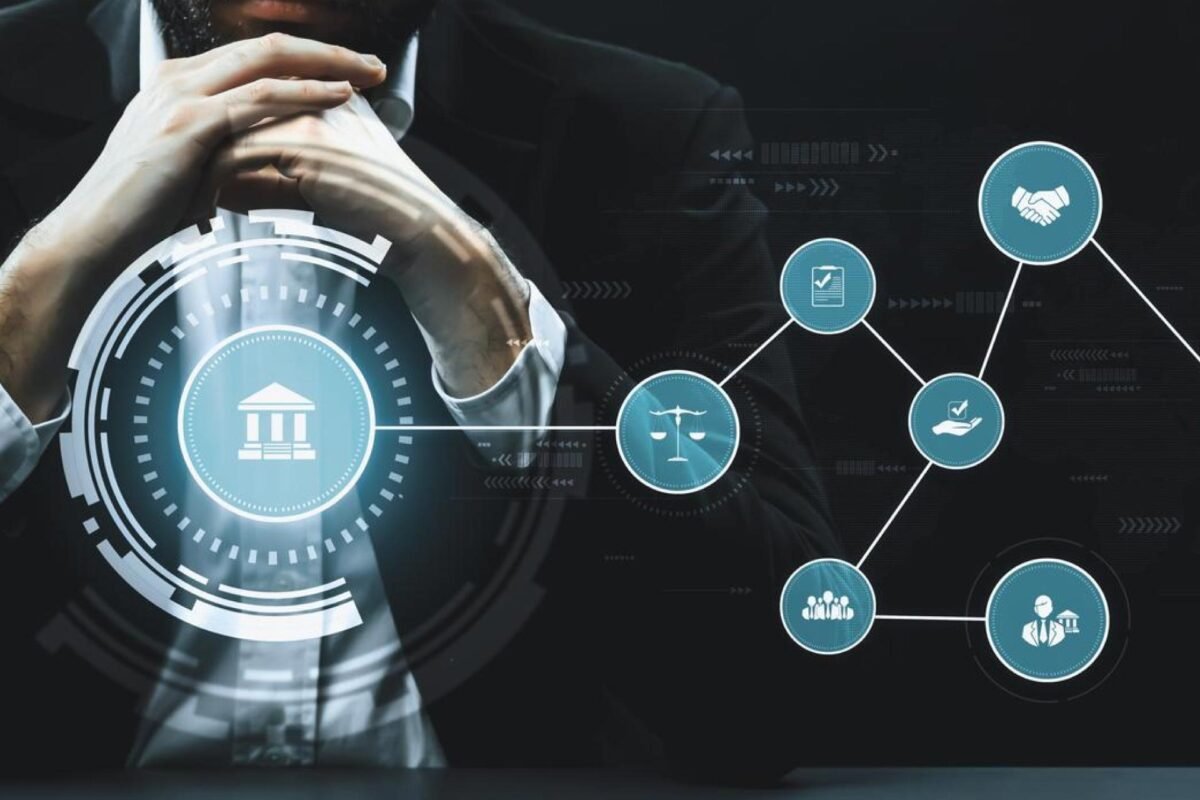Table of Contents:
1. The growing importance of AI in financial cybersecurity
2. Threat detection
3. Automate Response and Mitigation
4. AI Fraud Mitigation in Financial Services
5. Transaction Monitoring and Behavioral Analysis
6. Identity verification and fraud detection
7. Challenges of Implementing AI in Financial Cybersecurity
8. The Future of AI in Financial Cybersecurity
Conclusion
It is a known fact that AI and technology have transformed almost every industry out there, including finance. AI in finance offers unprecedented opportunities to optimize operations by enhancing customer experience and decision-making processes. However, it is understood that as rapid financial institutions are adopting AI, they are also escalating their chances of facing cybersecurity threats and fraud risks. This reality has not only sparked the need for integrating AI into cybersecurity frameworks and fraud mitigation strategies but also convinced financial institutions to leverage AI to fortify their defenses.
In this article, we will explore the role of AI in cybersecurity and fraud mitigation in financial services.
1. The growing importance of AI in financial cybersecurity
Financial institutions are most vulnerable to cyber attacks given the fact that they deal with sensitive data and money transactions. It is evident that some of the more classical approaches to cybersecurity, like firewalls and passwords, cannot hold against present-day threats and risks. Consequently, AI becomes an effective weapon to fight financial fraud.
2. Threat detection
AI offers the potential to identify and mitigate threats instantaneously, which is one of the most significant benefits of cybersecurity. AI is capable of sorting through massive amounts of data at much quicker pace than a human and can detect indications of threats that are looming before they reach their full potential. AI includes machine learning, where algorithms are trained to identify abnormal behaviors of users and alert systems at once.
For instance, using AI deep learning cybersecurity can analyze traffic flow in real time and can detect suspected unauthorized access or high-value transactions. In addition, based on the historical data, AI systems can also predict future attacks and vulnerabilities, which means that financial institutions do not have to act only in response to attacks.
3. Automate Response and Mitigation
Not only does AI analyze threats, but it can also handle the response procedure to minimize the time taken to address security threats. When a threat is detected, AI systems are ready to respond immediately. For instance, shutting down the infected systems can inform the manager, or following a set of security protocols.
The fast response is valuable in order to reduce and, in some cases, eliminate potential losses. When time matters, conditions like Distributed Denial of Service [DDoS] attacks or ransomware incidents, the opportunity to respond to the threats without human intervention can make the difference between marginal inconvenience and a major loss.
4. AI Fraud Mitigation in Financial Services
The problem of fraud is as old as the use of money, and with the development of digital banking and online payments, it has become even larger and more complicated. Sophistication of fraudsters is on the rise, and financial institutions have to adapt to this by having superior methods of combating fraud.
5. Transaction Monitoring and Behavioral Analysis
Perhaps the most well-known use of AI in fraud prevention is in the field of transaction control. In fact, AI capabilities can scan millions of transaction records in real-time while identifying those that represent additional risk of fraud. These systems are based on machine learning algorithms that can analyze the spending pattern and behavior of the customers. When there is a variation in the realized patterns, like a big ticket size from an area that is not familiar, then the system can alert its administrator or reject the transaction.
For instance, if a customer based in New York makes a large purchase in another country and the machine can identify that there are no travel records of this particular customer in the last few months, it would not hesitate to raise red flags of fraud. These proactive monitoring services enable the financial institutions to manage fraud surprises before they impact their customers by cleaning millions of dollars.
6. Identity verification and fraud detection
It is also notable that the AI technology impacts the identity verification procedures currently in place. In recent years, synthetic identity fraud, where the fraudster builds a completely new identity using real and fictional data, poses significant challenges that simple identity check methods like using passwords or simple knowledge-based authentications cannot address.
AI identity verification solutions employ facial and voice recognition, fingerprints, call detail records, and behavioral biometrics (how a person types or uses a device) as forms of identification. These systems are also less susceptible to tricks compared to regular approaches, which makes them less vulnerable to fraud. Besides, AI units can correlate several data points from different sources and validate identities in real time.
7. Challenges of Implementing AI in Financial Cybersecurity
Despite the positivity posed by AI, it has its shortcomings when it comes to cybersecurity and fraud prevention. Another concern are the opaque AI systems. While financial institutions rely on AI systems, they may not understand how these systems make decisions, which can cause problems in the areas of transparency and accountability.
Moreover, AI can also be the subject of different cyber threats where hackers attack the artificial intelligence belonging to the company. Malicious users are in the process of evolving methods of distorting the decision-making process of AI algorithms, such as adversarial techniques where the hackers introduce misleading data that causes the AI automated systems to make bad choices or decisions.
8. The Future of AI in Financial Cybersecurity
The importance of AI in the financial service industry will continue to emerge as a significant factor in cybersecurity and fraud prevention as it advances. The future may witness the development of enhanced AI algorithms for predicting and preempting cyber threats. Banks and other financial organizations that will incorporate AI into their services will have to weigh the advantages and disadvantages of its use and apply enhanced safeguards to preserve AI capabilities from misuse and attacks.
Conclusion
The financial sector sees AI as an innovation that enhances cybersecurity and fraud prevention. The ability to identify threats, act on alerts, and continuously supervise transactions makes it pivotal for financial institutions to address the increasing threat landscape of cyber threats. AI technology will be a key enabler in the next generation of financial services, and, therefore, understanding how it can be used safely and securely will be paramount in maintaining the integrity of financial systems in the 21st century.
Stay Ahead of the Financial Curve with Our Latest Fintech News Updates!



